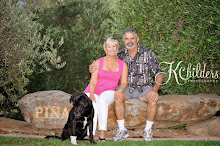We've got this sharp young kid that has been working with us at Piña Vineyard Management for about a year and a half. Justin is a youngster half my age, married with a 2 & ½ year old daughter. He continually amazes me with how much he knows about grapes and how much he has learned about the vineyards we care for. In addition to that, he's humble and has a great attitude. Recently, he wrote an in-house summary of the 2013 growing season. I thought it was very well written. He included just enough technical information to satisfy those that need it, but not so much to lose the interest of those that don't.
See what you think:
2013
Growing Season
The
winter leading up to the 2013 growing season was a repeat of the previous year.
It was exceptionally dry. Of the ~25” of rain that fell from 11/1/12 through 3/31/13,
10.5” fell over five consecutive days: 11/28-12/2. There were a few showers to
follow in December, but after the first of the year we only received ~3-5” of
rain by the end of March. This led to soils drying out much earlier than
normal. In many vineyards, irrigation was started during bud-break in order to
ensure healthy early season growth.
Similar
to 2012, bud-break was 5-7 days later than average. Fortunately, the warm
weather in April allowed things to catch up. April had an average daily high temp
of 77°F. Approximately 10 days of April were above 80°F, and on 4/22 we saw
temps in the 90s. There were only a handful of frost days with some areas never
needing to run their wind machines.
The
nice consistent spring weather led to an early bloom. Most locations were ~7-10
days early. In some of the later areas such as Howell Mountain, Calistoga, and
Pope Valley there was shatter as a result of very cold mornings during the
critical bloom stage. Unusual late season frost damage was even seen in a few
locations because of the mornings of 5/22 & 5/23 where temps reached the
low 30s.
The
weather continued to be moderately warm throughout the spring with very little
rainfall. The early season heat helped with grape skin, tannin, and overall
flavor development. Yields appeared to be average to slightly above average
with potential for an exceptional vintage. A brief scare occurred during the last
week of June when temps broke 100°F for a few days. Some areas saw close to
110°F. Fortunately, veraison had yet to begin so the berries were still hard and
protected.
Most
areas were 10-14 days earlier than average for veraison. With the exception of
some minor fruit thinning to balance out vines, the rest of the 2013 season was
thankfully uneventful. Some areas needed to be dialed back on the irrigation in
order to conserve water, but the vines were able to manage throughout the rest
of the season.
Harvest
for Piña began on August 8th with Rutherford Sauvignon Blanc. This
was 20 days earlier than 2012. Most areas were ~2 weeks early. Yields were
similar to last year and slightly bigger in some areas while slightly lower in
other areas. The perfect weather allowed winemakers to choose the flavor
profile they were wanting. The warm season led to some vineyards having high
sugars but needing to wait a little longer for the flavors to catch-up. This
was actually a blessing for some winemakers, as the fast & furious harvest
left many wineries with no available tank space. A few windy days during the
middle of September led to accelerated dehydration and a raisin thinning pass
was required in a few areas of the valley. Brief showers occurred around 9/21,
but advantageous weather followed and the fruit that was still hanging dried
out quickly. For a lot of wineries, harvest wrapped up by the end of September.
This was one of the earliest that most winemakers can remember.
The
general consensus is that the 2013 vintage is one for the history books. The
season had days full of beautiful weather and cold nights to maintain grape
acidity. Thick grape skins with rapid sugar accumulation allowed winemakers to
pick based on flavor development. Let’s hope for a repeat in 2014!




.jpg)







